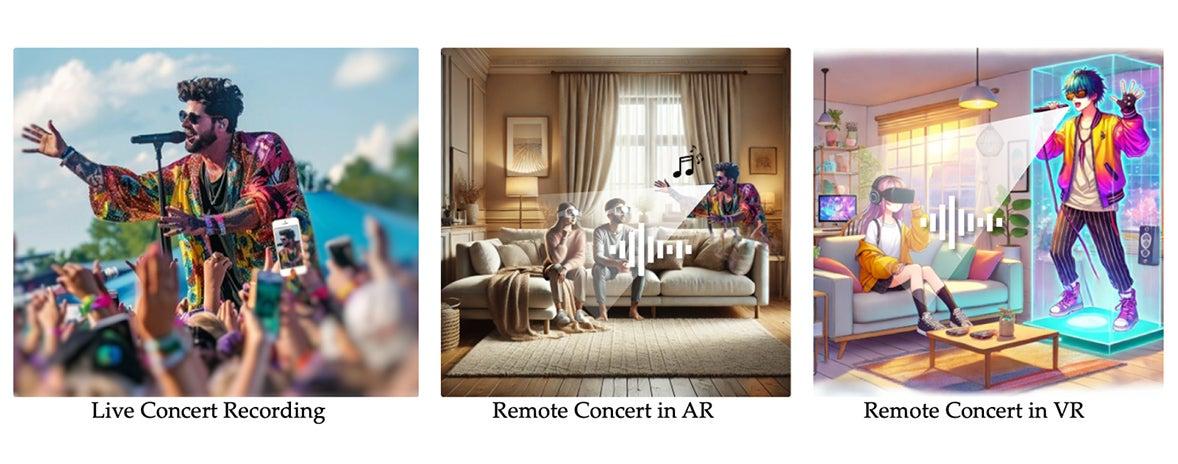Affordable and Innovative VR Solutions for Schools: the Best Cost-Effective Options for Education
Virtual Reality (VR) has transformed the educational landscape, making immersive learning more accessible and interactive than ever before. For many schools, however, the challenge lies in finding affordable and innovative VR solutions that fit thier budget and curriculum needs. In this comprehensive guide, we explore the best cost-effective VR options available for education, their benefits, and practical tips for seamless integration in the classroom.
Why VR in Education Matters
VR technology brings textbooks to life, enhances student engagement, and fosters a deeper understanding of complex subjects. By providing immersive experiences, students can:
- Explore ancient landmarks and scientific phenomena beyond classroom walls.
- participate in virtual science labs and art studios without costly materials.
- Build empathy thru exposure to diverse cultures and perspectives.
the real question many educators face is: Can VR be affordable for schools? The answer is a resounding yes.
Affordable VR Solutions for Schools
1. Google Cardboard
Google Cardboard is one of the most budget-pleasant VR options for education. By using inexpensive cardboard viewers and compatible smartphones, students can access a vast library of immersive content.
- Cost: Starting at $10 per headset
- key Features: easy setup, compatible with Android and iOS, access to Google Expeditions and YouTube VR
- Best For: Interactive field trips, science visualizations, geography lessons
2.Meta Quest 2 (formerly Oculus Quest 2)
The Meta Quest 2 offers powerful VR experiences at a fraction of the cost of traditional VR systems. With standalone hardware, educators don’t need expensive computers or complex wiring.
- Cost: Approximately $299 per device
- Key Features: Wireless gameplay, teacher-friendly controls, large library of educational apps
- Best For: Science simulations, arts and creativity, collaborative learning environments
3.ClassVR
ClassVR is designed specifically for schools, offering dedicated hardware, teacher management software, and a curriculum-focused content library.
- Cost: starting at $399 per headset (bulk pricing often available)
- Key Features: Lesson planning tools,safe device management,curriculum-aligned resources
- Best For: STEM projects,history,language arts,whole-class participation
4. Merge VR Headset
The Merge VR Headset is safe, cozy, and compatible with most smartphones.Merge also offers AR cubes for hands-on learning, making it a versatile choice for schools.
- Cost: Around $39.99 per headset
- Key Features: Durable foam construction, adjustable, easy cleaning
- Best For: Science labs, anatomy exploration, interactive field trips
5. Pico VR headset
Pico VR Headsets are gaining ground in educational settings due to their usability and moderate pricing.
- Cost: Starting at $499 per headset
- Key Features: Standalone operation, high-quality visuals, large field of view
- Best For: Group experiences, advanced science learning, creative arts
Benefits of VR in the Classroom
- Enhanced engagement: VR grabs attention and boosts participation.
- Improved Retention: Studies show immersive experiences improve long-term memory retention.
- Inclusive Learning: Supports diverse learning styles and special education needs.
- Safe Exploration: students can experiment and visualize concepts without physical risks.
- Collaboration: Multiplayer VR options promote teamwork and communication.
Practical Tips for Schools
- Start Small: Pilot VR with a couple of devices and a single class before scaling up.
- Leverage Free Content: Use free or low-cost educational apps available on VR platforms.
- Train Teachers: conduct staff workshops to build confidence in using VR tools.
- Seek Grants: Many organizations offer technology grants for schools adopting VR.
- Connect With Community: Partner with local museums or science centers for collaborative VR projects.
Case Studies: VR Success in Schools
A Middle School Science Revolution (USA)
At Westside middle School, teachers used Google Expeditions and Merge VR headsets for immersive science labs. Results included improved test scores and heightened enthusiasm for STEM subjects.
Empathy Building Through VR (UK)
St. Mary’s Primary integrated ClassVR to run virtual field trips to refugee camps and historical sites, leading to increased compassion and global awareness among students.
Art & Creativity With Meta Quest 2 (Australia)
Southside High utilized Meta Quest 2 VR headsets for digital art classes, enabling students to create expressive 3D sculptures and foster creativity even during remote learning.
First-Hand Teacher Experience
“Introducing affordable VR headsets in my classroom transformed my teaching approach. Students were more engaged, discussions were richer, and even reluctant learners found something captivating to explore. The Merge headset and free apps were simple to set up and instantly sparked curiosity.”
— Mrs. Helena Torres, 6th Grade Science Teacher
How to Choose the Right VR Solution for Your School
- Budget: Determine the number of devices you need and calculate per-student cost.
- Compatibility: Check whether you require standalone VR or smartphone-enabled headsets.
- Content: Review available education apps—some platforms offer curriculum-aligned resources for free.
- Support: Look for companies providing teacher guides,professional progress,and responsive tech support.
- Durability: Consider the build quality, especially for younger or active learners.
Making VR adoption Affordable: Funding & Support
While upfront costs may concern school administrators, there are several strategies to make affordable VR solutions a reality:
- Technology Grants: Apply for grants from organizations like Edutopia, local governments, or STEM initiatives.
- Bulk Purchases: Negotiate bulk discounts directly with VR providers.
- Phased Rollout: Start with a classroom pilot and gradually expand as positive results materialize.
- PTA & Community Fundraising: Engage your local community in fundraising initiatives tied to technology upgrades.
Conclusion: The Future of Education Is Immersive and Accessible
Affordable VR solutions for schools are no longer a futuristic dream—they’re a practical and transformative reality. By choosing innovative, cost-effective VR options like Google Cardboard, Merge VR, Meta Quest 2, ClassVR, and Pico, schools can unlock new worlds of learning, spark student curiosity, and improve educational outcomes. With the right planning,resources,and training,any school can successfully introduce affordable and innovative VR solutions for an enriched learning experience.
Ready to start your VR journey? Explore affordable VR headsets, partner with educational content creators, and take the next step toward immersive learning today!

